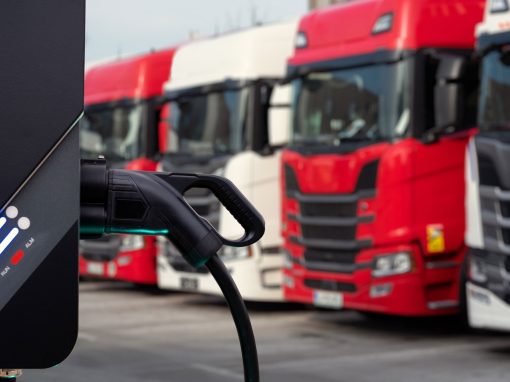Consumer and operator interest in the skinny bundle arena is heating up – while services like Sling TV and Playstation Vue launched in 2015, other players in the Media and Entertainment ecosystem appeared to take a wait-and-see approach to this type of service. However, with the acceleration in cord-cutting and demographic trends within younger consumers negatively impacting the Pay-TV ecosystem, there has been an explosion of skinny bundle offerings since the end of 2016.

The proliferation of skinny bundles is a clear reaction to shifting consumer preferences and pressure on the Pay-TV ecosystem and the impact of these bundles will echo across the entire Media & Entertainment value chain.
Trends and Observations across the value chain:
Content Creation
- There are an increased number of channels to market for content creators (e.g., OTT, Skinny Bundles, etc.)
- However, the “Long-tail” of content creators is and will continue to be left out of most skinny bundles and thus, negatively impacted by the evolution of the M&E ecosystem
- Skinny Bundles may serve as a litmus test for the popularity ESPN / Sports – some bundles leave out ESPN or include it as an add-on option
- Long-form / premium content providers may benefit through add-on packages for skinny bundles (e.g. HBO, Showtime, etc)
- The impact on local broadcasters will vary depending on the retransmission deal that is agreed upon – in aggregate, skinny bundles can help expand the reach of local broadcasters to cord-cutters and “cord-nevers”
Distribution / Aggregation
- Pay TV operators are looking for ways to stem the tide of cord-cutting and bring these consumers and “cord-nevers” into the Pay TV ecosystem.
- Skinny bundles are focused on appealing to millennials / Gen Z; skinny bundles offer cheaper prices and more diverse viewing options vis-à-vis traditional Pay TV
- Operators are leveraging bundles to increase ARPU / customer stickiness – Comcast is bundling its kinny bundle offering with its broadband cable; AT&T offers discounts for including DIRECTV Now with its mobile service
Transmission
- Most skinny bundles are streamed to connected TVs, set-top-boxes mobile devices and PC browsers
- Sufficient internet speeds are required for smooth user experience; data restrictions may limit usage on mobile devices
- TV is increasingly viewed as add-on / incentive for consumers to keep broadband / high-speed internet; streaming-only bundles further confirm and may accelerate this shift
- Non-cable connectivity providers are working to increase capacity to handle explosion of mobile viewing; net neutrality rules can impact how operators manage their networks / video transmission
Consumption
- Form factors for consumption are changing; TV usage is decreasing vis-à-vis phones / tablets, particularly among millennials / Gen Z – skinny bundles allow operators to reach these consumers
- App-based software ecosystem of hardware devices requires additional development / upkeep for operators to ensure consumers can watch on different devices
- Consumption of TV is becoming more targeted, particularly among younger generations – skinny bundles help address a key issue for: having too much content that will never be viewed
- Viewership and interest in sports is decreasing among younger generations; content consumption shifting towards non-TV platforms (e.g., YouTube); the lower price point of skinny bundles may encourage more viewership of traditional TV content
Looking Ahead
The media and entertainment ecosystem is evolving rapidly and skinny bundles will be a key component for the foreseeable future. Potential outcomes across the value chain resulting from the proliferation of skinny bundles include:
Content Creation
- There will be a wave of consolidation and/or cutbacks in original programming as the “long-tail” of content creators navigate the new Media & Entertainment Ecosystem
- Skinny bundles will focus on including popular networks / channels (e.g., TNT, AMC, ESPN, etc.) – smaller channels will struggle to find viewers as cord-cutting continues
Distribution / Aggregation
- Large cable operators will introduce standalone skinny bundles to entice cord-cutters and cord-nevers into the Pay TV ecosystem
- ESPN / Regional sports networks will increasingly be separated from the standard skinny bundle, available instead as a separate add-on package
- Amazon / Netflix can be interesting players in the Pay TV space if they introduce of a skinny bundle in combination with their existing SVOD offerings; in the same vein, cable operators may look to tie VOD offerings with skinny bundles.
- Price competition may intensify as operators introduce lower-price bundles with fewer channels or potentially a true “a-la-carte” option.
Transmission
- Pending upcoming net neutrality changes, telcos will look to zero-rate video consumption from skinny bundles to incentive customers to switch to their network
- Players like Verizon or T-Mobile may look to partner with a cable operator / skinny bundle provider to offer a combined mobile data / skinny bundle package.
- Telcos / Cable Operators with existing skinny bundles will continue to leverage promotional pricing on skinny bundles as an add-on service to increase customer stickiness
Consumption
- Mobile-based consumption will continue to increase; particularly for younger generations – skinny bundle providers may look to start including exclusive, short-form content targeted towards mobile audiences
- Bundles with wider breadth of integration among streaming hardware devices (e.g., STB, smart TVs, etc.) will be increasingly advantaged vis-à-vis less integrated bundles as consumer adoption of streaming hardware continues to grow
- Apple or Google may look to bundle a trial of a skinny bundle into their hardware devices (Apple TV, Chromecast) to incentivize consumer adoption; this is especially true for Google, as it looks to increase adoption of its Youtube TV service





